Abstract
A bacteriocin-like substance, active against strains of Clostridium botulinum type E, is produced by certain nontoxic organisms whose biochemical properties and morphological characteristics are similar to type E. The substance, for which the name “boticin E” is proposed, is bacteriolytic for vegetative cells and bacteriostatic for spores of type E. Its spectrum of activity is somewhat strain-specific. Of the clostridial species tested, only C. botulinum type E and, to a lesser extent, C. perfringens and C. acetobutylicum, but not C. botulinum types A, B, or F, are sensitive. Irreversibly resistant variants originating from both vegetative cells and spores of certain strains were obtained. The active substance is heat-stable and dialyzable, and is not inactivated by chloroform but is digested by trypsin. Ethyl alcohol and acetone precipitates are fully active, whereas trichloroacetic acid precipitates are only partially active. Other nontoxic organisms producing similar antagonistic substances are discussed.
Full text
PDF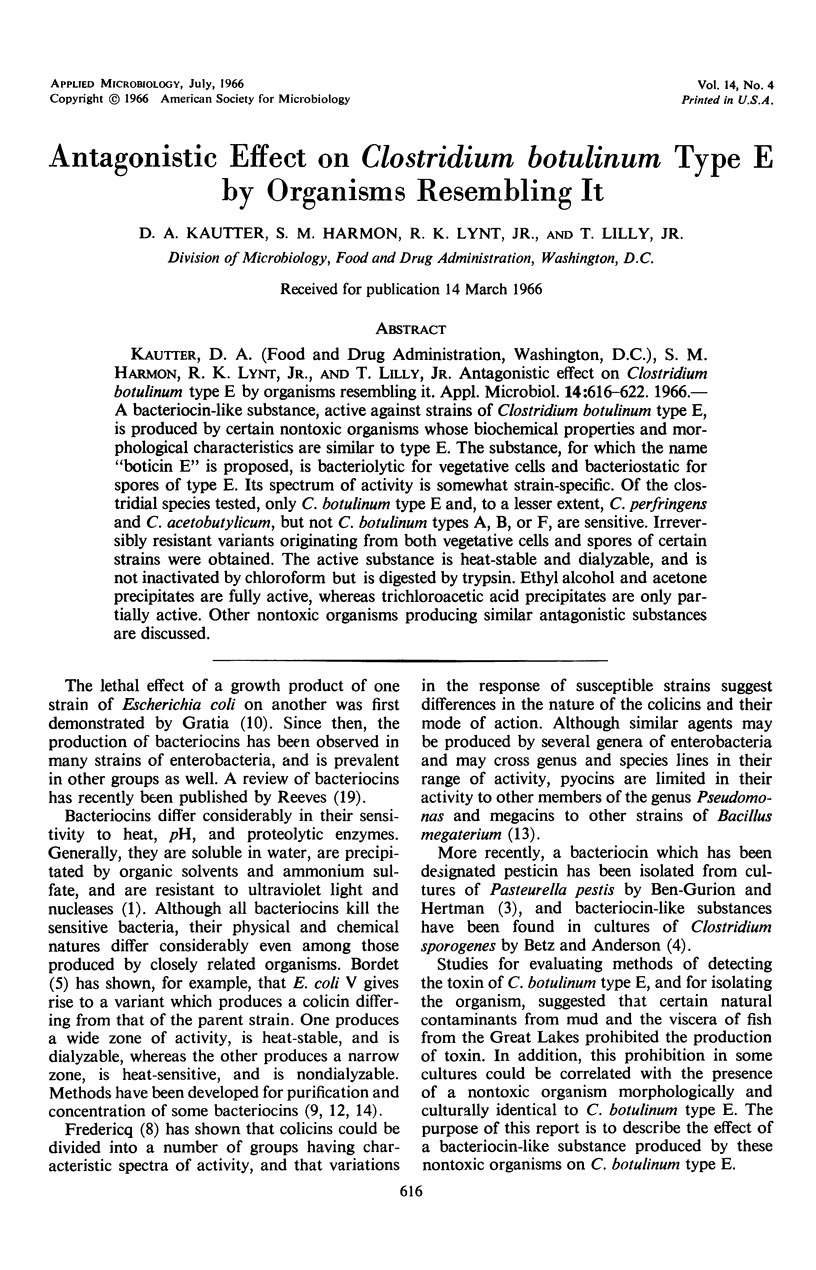
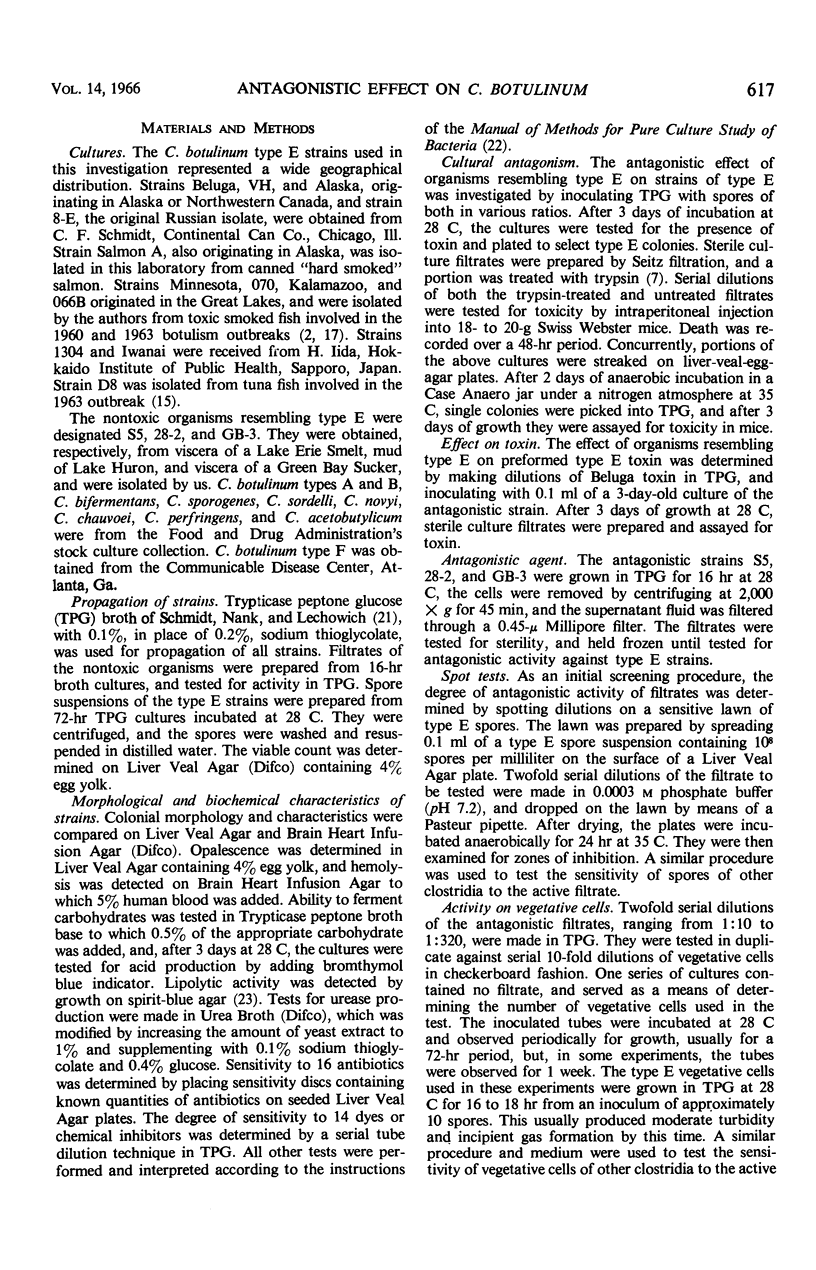
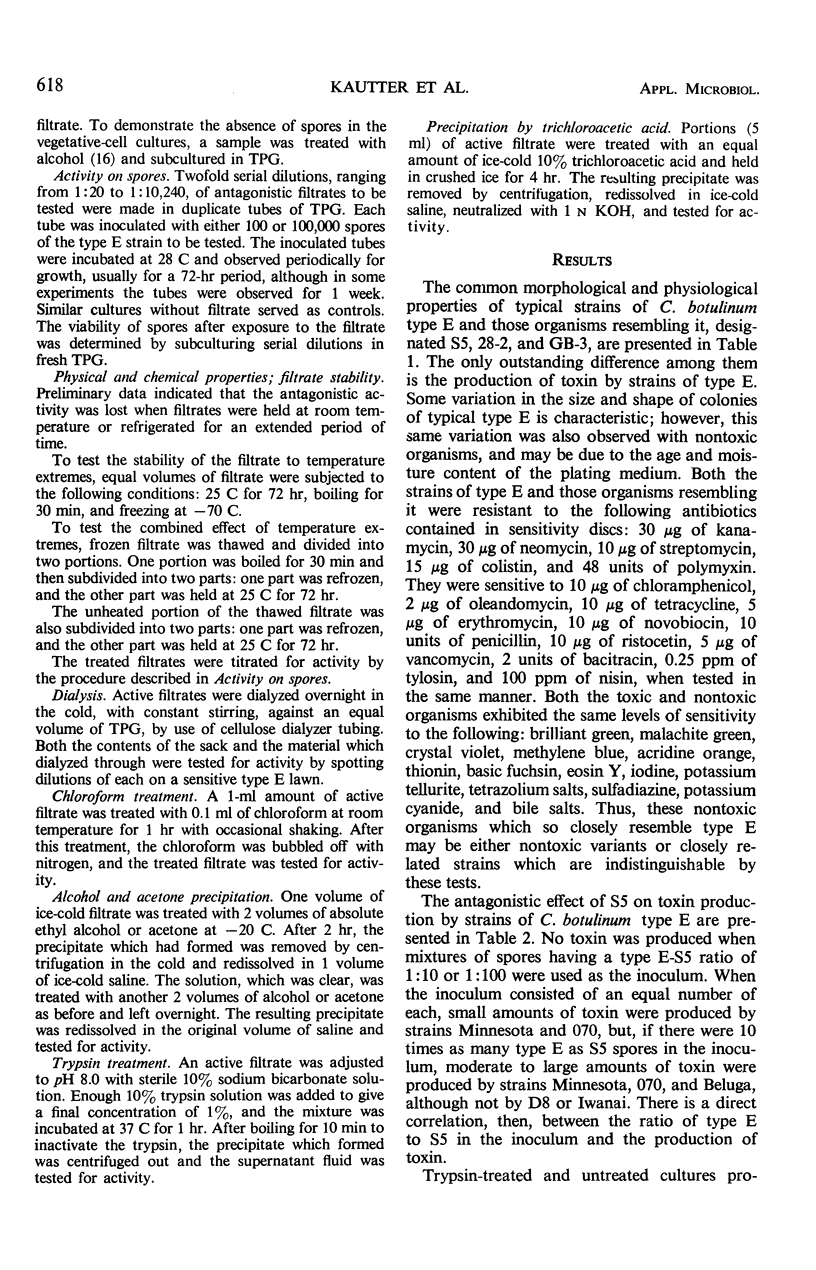
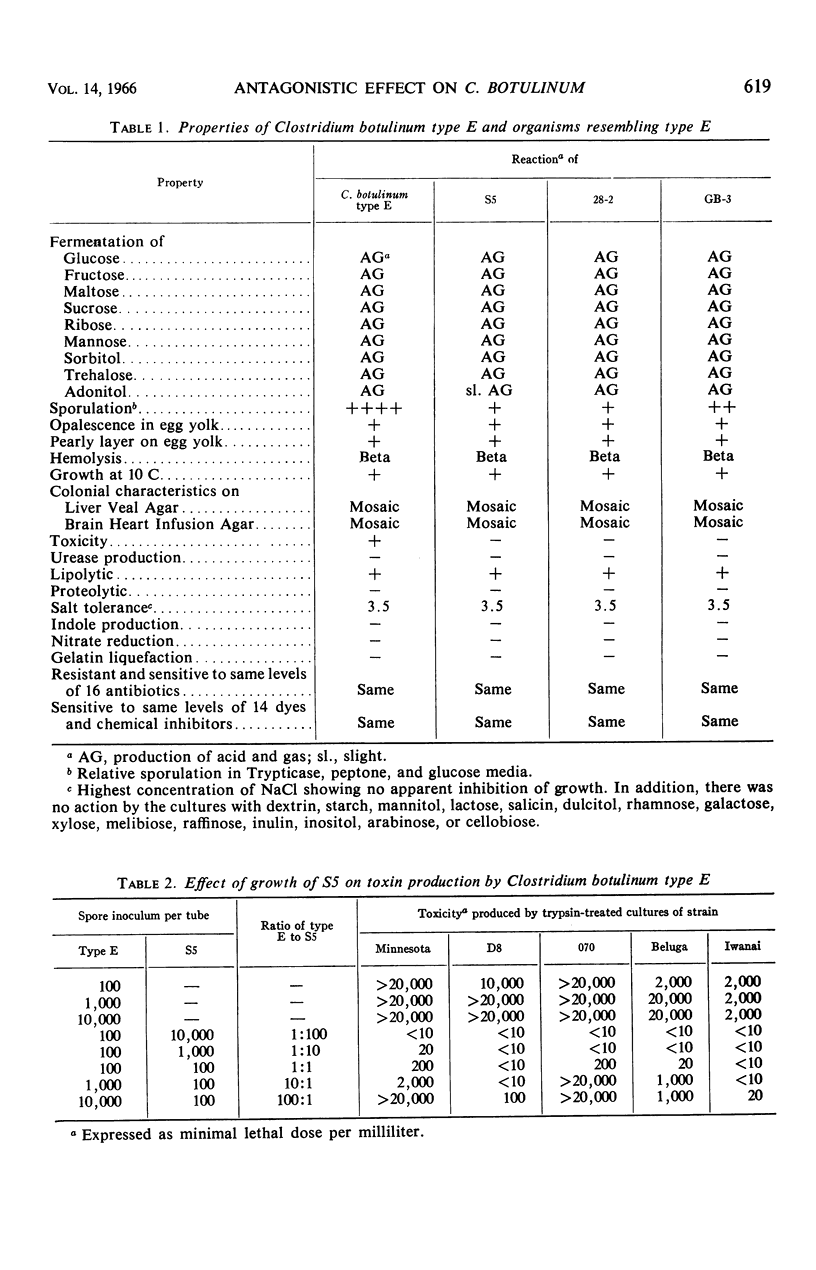
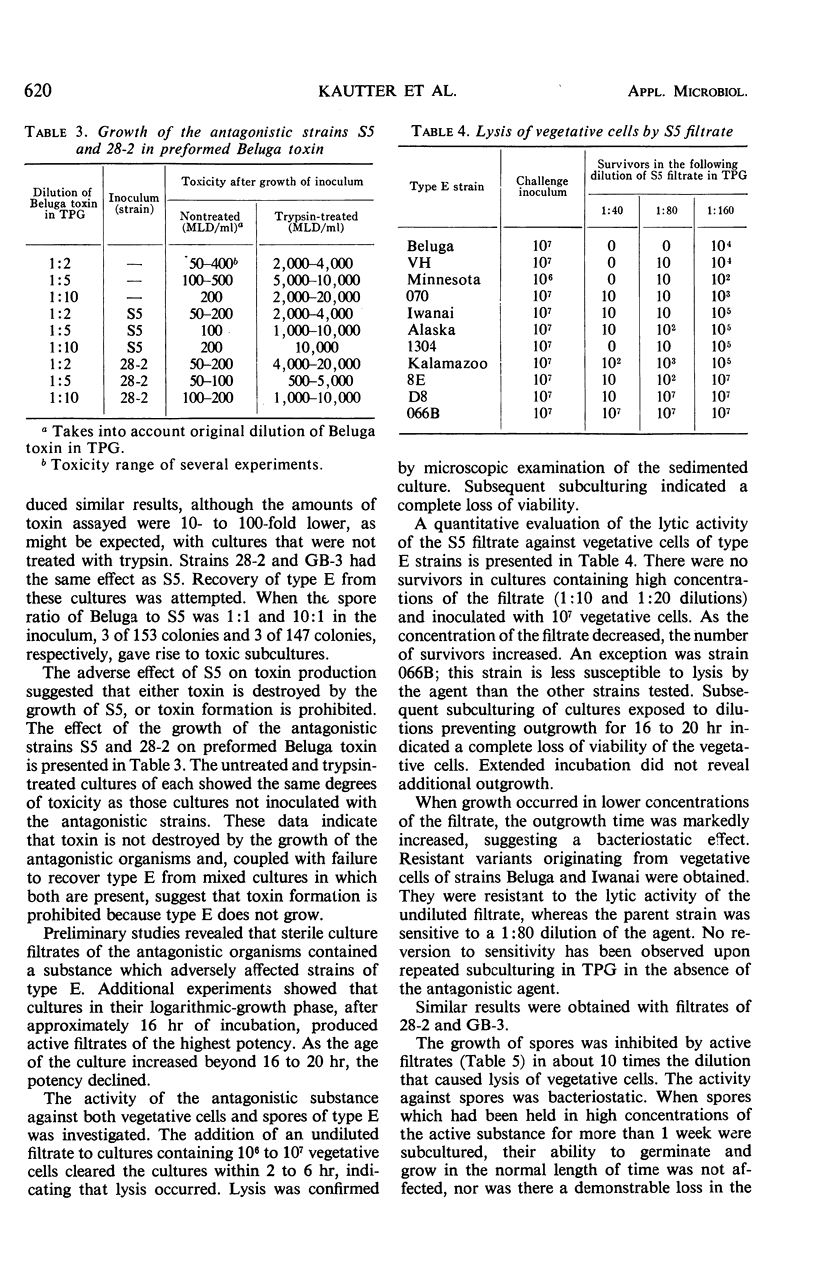
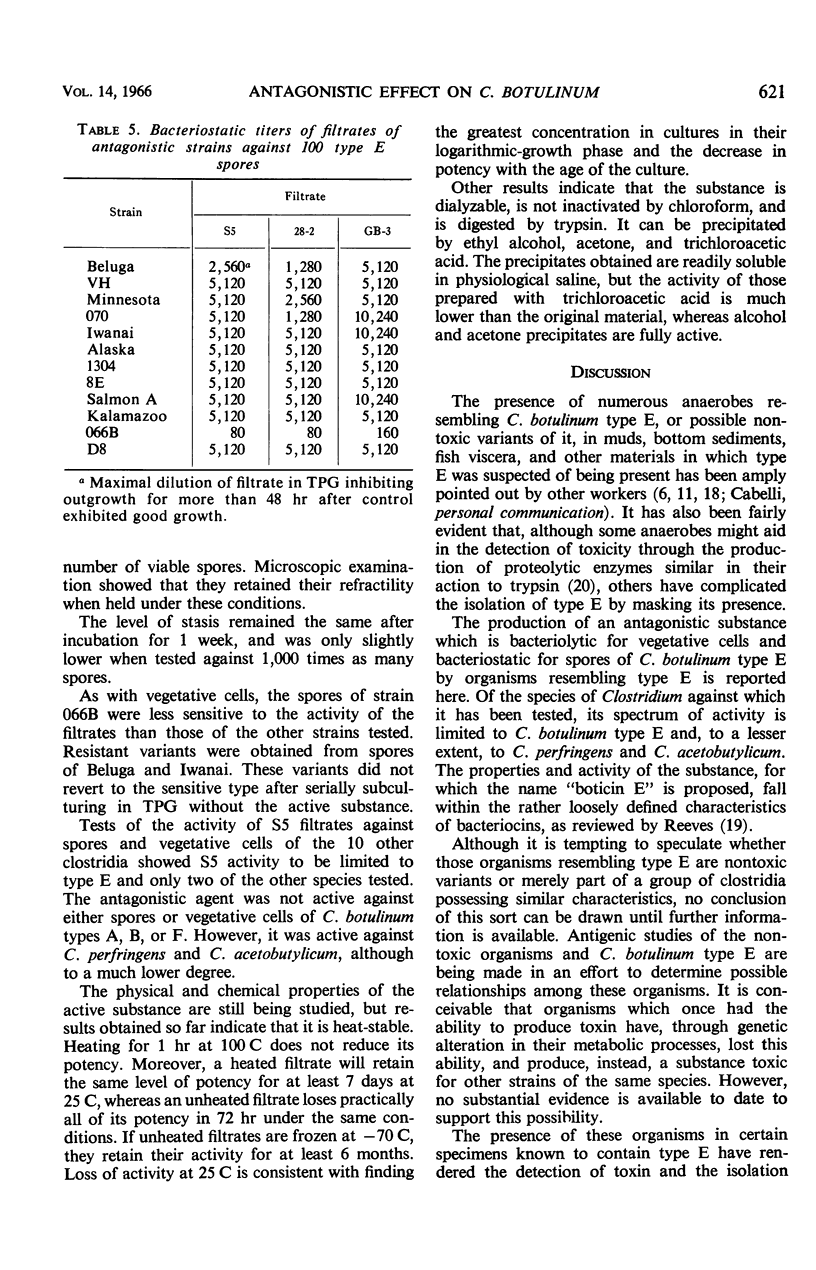
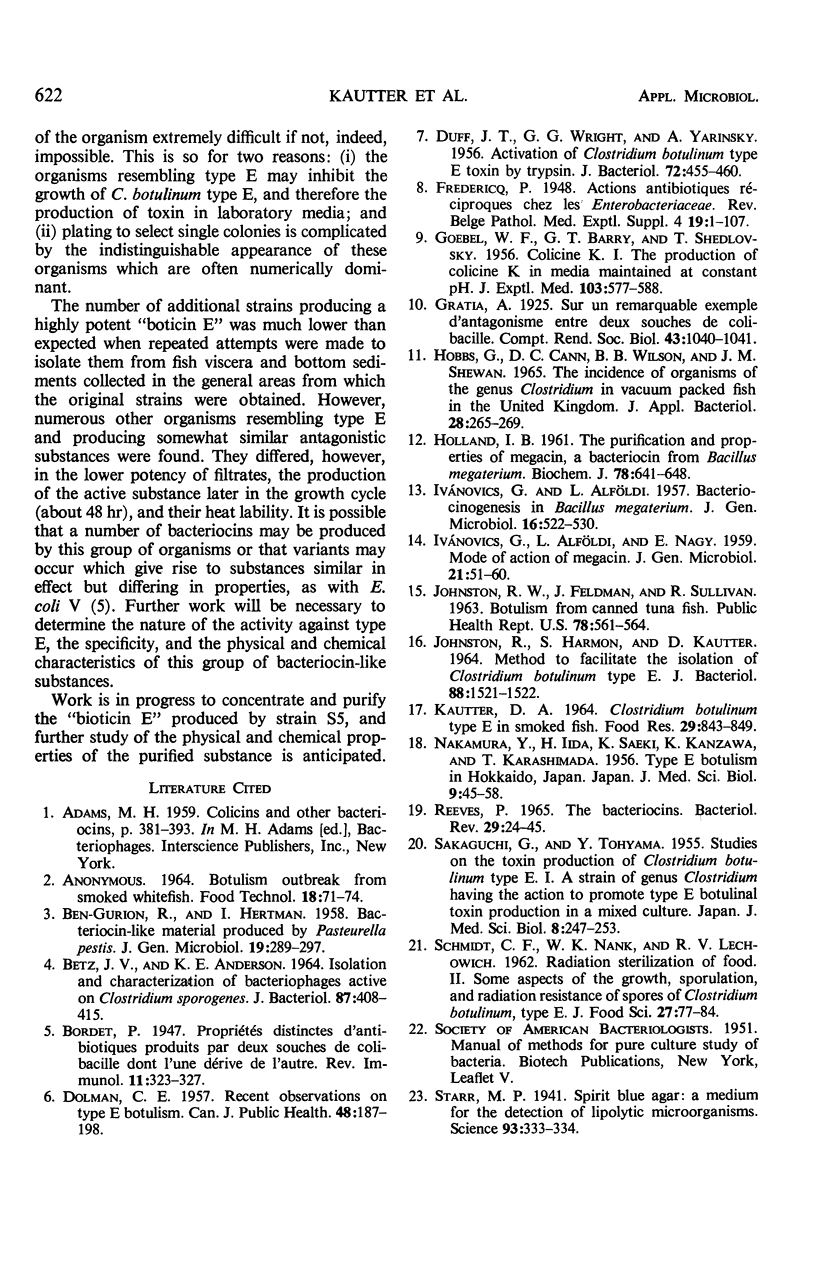
Selected References
These references are in PubMed. This may not be the complete list of references from this article.
- BEN-GURION R., HERTMAN I. Bacteriocin-like material produced by Pasteurella pestis. J Gen Microbiol. 1958 Oct;19(2):289–297. doi: 10.1099/00221287-19-2-289. [DOI] [PubMed] [Google Scholar]
- BETZ J. V., ANDERSON K. E. ISOLATION AND CHARACTERIZATION OF BACTERIOPHAGES ACTIVE ON CLOSTRIDIUM SPOROGENES. J Bacteriol. 1964 Feb;87:408–415. doi: 10.1128/jb.87.2.408-415.1964. [DOI] [PMC free article] [PubMed] [Google Scholar]
- DOLMAN C. E. Recent observations on type E botulism. Can J Public Health. 1957 May;48(5):187–198. [PubMed] [Google Scholar]
- DUFF J. T., WRIGHT G. G., YARINSKY A. Activation of Clostridium botulinum type E toxin by trypsin. J Bacteriol. 1956 Oct;72(4):455–460. doi: 10.1128/jb.72.4.455-460.1956. [DOI] [PMC free article] [PubMed] [Google Scholar]
- GOEBEL W. F., BARRY G. T., SHEDLOVSKY T. Colicine K. I. The production of colicine K in media maintained at constant pH. J Exp Med. 1956 May 1;103(5):577–588. doi: 10.1084/jem.103.5.577. [DOI] [PMC free article] [PubMed] [Google Scholar]
- HOLLAND I. B. The purification and properties of megacin, a bacteriocin from Bacillus megaterium. Biochem J. 1961 Mar;78:641–648. doi: 10.1042/bj0780641. [DOI] [PMC free article] [PubMed] [Google Scholar]
- Hobbs G., Cann D. C., Wilson B. B., Shewan J. M. The incidence of organisms of the genus Clostridium in vacuum packed fish in the United Kingdom. J Appl Bacteriol. 1965 Aug;28(2):265–270. doi: 10.1111/j.1365-2672.1965.tb02151.x. [DOI] [PubMed] [Google Scholar]
- IVANOVICS G., ALFOLDI L. Bacteriocinogenesis in Bacillus megaterium. J Gen Microbiol. 1957 Jun;16(3):522–530. doi: 10.1099/00221287-16-3-522. [DOI] [PubMed] [Google Scholar]
- IVANOVICS G., ALFOLDI L., NAGY E. Mode of action of megacin. J Gen Microbiol. 1959 Aug;21:51–60. doi: 10.1099/00221287-21-1-51. [DOI] [PubMed] [Google Scholar]
- JOHNSTON R. W., FELDMAN J., SULLIVAN R. Botulism from canned tuna fish. Public Health Rep. 1963 Jul;78:561–564. [PMC free article] [PubMed] [Google Scholar]
- JOHNSTON R., HARMON S., KAUTTER D. METHOD TO FACILITATE THE ISOLATION OF CLOSTRIDIUM BOTULINUM TYPE E. J Bacteriol. 1964 Nov;88:1521–1522. doi: 10.1128/jb.88.5.1521-1522.1964. [DOI] [PMC free article] [PubMed] [Google Scholar]
- REEVES P. THE BACTERIOCINS. Bacteriol Rev. 1965 Mar;29:24–45. doi: 10.1128/br.29.1.24-45.1965. [DOI] [PMC free article] [PubMed] [Google Scholar]
- SAKAGUCHI G., TOHYAMA Y. Studies on the toxin production of Clostridium botulinum type E. I. A strain of genus Clostridium having the action to promote type E botulinal toxin production in a mixed culture. Jpn J Med Sci Biol. 1955 Jun;8(3):247–253. doi: 10.7883/yoken1952.8.247. [DOI] [PubMed] [Google Scholar]
- Starr M. P. SPIRIT BLUE AGAR: A MEDIUM FOR THE DETECTION OF LIPOLYTIC MICROORGANISMS. Science. 1941 Apr 4;93(2414):333–334. doi: 10.1126/science.93.2414.333. [DOI] [PubMed] [Google Scholar]


